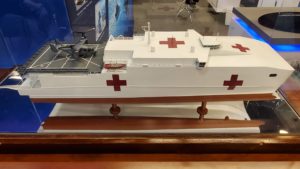
The Senate Appropriations Committee’s proposed COVID-19 pandemic relief bill includes $2.2 billion for Navy shipbuilding, among other Navy items. The shipbuilding funds would be available through September 2024 and would cover $1.45 billion for four “expeditionary medical ships”, $260 million for one Austal USA-built EPF expeditionary fast transport ship, and $250 million for the surface combatant supplier base program. The bill specified these funds are “to prevent, prepare for, and respond to coronavirus, domestically or internationally.” This bill was first…

 By
By 











